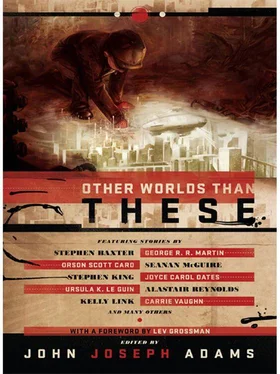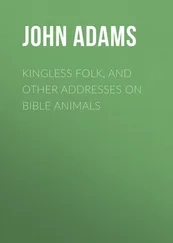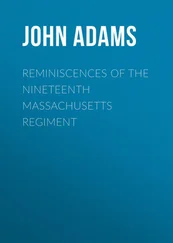“Looks like.” He close-upped the scene.
Below, a long ice ridge rose out of the sea like a great gray reef. Following its Earthly analogy, it teemed with life. Quilted patches of vivid blue-green and carrot-orange spattered its natural pallor. Out of those patches spindly trunks stretched toward the midmorning sun. At their tips crackled bright blue St. Elmo’s fire. Violet-tinged flying wings swooped lazily in and out among them to feed. Some, already filled, alighted at the shoreline and folded themselves, waiting with their flat heads cocked at angles.
The sky, even at Counter’s midmorning, remained a dark backdrop for gauzy auroral curtains that bristled with energy. This world had an atmospheric blanket not dense enough to scatter the wan sunlight. For on this brane, the sun itself had less mass, too.
She peered down. She was pilot, but a biologist as well. And they knew there was something waiting…
“Going in,” she said.
Into this slow world they came with a high roar. Wings flapped away from the noise. A giant filled the sky.
Julie dropped the lander closer. Her legs were cramped from the small pilot chair and she bounced with the rattling boom of atmospheric braking.
She blinked, suddenly alarmed. Beside her in his acceleration couch Al peered forward at the swiftly looming landscape. “How’s that spot?” He jabbed a finger tensely at the approaching horizon.
“Near the sea? Sure. Plenty of life forms there. Kind of like an African watering hole.” Analogies were all she had to go on here but there was a resemblance. Their reconn scans had showed a ferment all along the shoreline.
Al brought them down steady above a rocky plateau. Their drive ran red-hot.
Now here was a problem nobody on the mission team, for all their contingency planning, had foreseen. Their deceleration plume was bound to incinerate many of the life forms in this utterly cold ecosystem. Even after hours, the lander might be too hot for any life to approach, not to mention scalding them when nearby ices suddenly boiled away.
Well, nothing to do about it now.
“Fifty meters and holding.” Al glanced at her. “Ok?”
“Touchdown,” she said, and they settled onto the rock.
To land on ice would have sunk them hip-deep in fluid, only to then be refrozen rigidly into place. They eagerly watched the plain. Something hurried away at the horizon, which did not look more than a kilometer away.
“Look at those lichen,” she said eagerly. “In so skimpy an energy environment, how can there be so many of them?”
“We’re going to be hot for an hour, easy,” Al said, his calm, careful gaze sweeping the view systematically. The ship’s computers were taking digital photographs automatically, getting a good map. “I say we take a walk.”
She tapped a key, giving herself a voice channel, reciting her ID opening without thinking. “Okay, now the good stuff. As we agreed, I am adding my own verbal comments to the data I just sent you.”
They had not agreed, not at all. Many of the Counter Mission Control engineers, wedded to their mathematical slang and NASA’s jawbone acronyms, felt that commentary was subjective and useless. Let the expert teams back home interpret the data. But the PR people liked anything they could use.
“Counter is a much livelier place than we ever imagined. There’s weather, for one thing—a product of the planet’s six-day rotation and the mysterious heating. Turns out the melting and freezing point of methane is crucial. With the heating-up, the mean temperature is well high enough that nitrogen and argon stay gaseous, giving Counter its thin atmosphere. Of course, the ammonia and carbon dioxide are solid as rock—Counter’s warmer, but still incredibly cold, by our standards. Methane, though, can go either way. It thaws, every morning. Even better, the methane doesn’t just sublime—nope, it melts . Then it freezes at night.”
Now the dawn line was creeping at its achingly slow pace over a ridgeline, casting long shadows that pointed like arrows across a great rock plain. There was something there she could scarcely believe, hard to make out even from their thousand-kilometer-high orbit under the best magnification. Something they weren’t going to believe back Earthside. So keep up the patter and lead them to it. Just do it.
“Meanwhile on the dark side there’s a great ‘heat sink,’ like the one over Antarctica on Earth. It moves slowly across the planet as it turns, radiating heat into space and pressing down a column of cold air—I mean, of even colder air. From its lowest, coldest point, winds flow out toward the day side. At the sunset line they meet sun-warmed air—and it snows. Snow! Maybe I should take up skiing, huh?”
At least Al laughed. It was hard, talking to a mute audience. And she was getting jittery. She took a hit of the thick, jolting Columbian coffee in her mug. Onward—
“On the sunrise side they meet sunlight and melting methane ice, and it rains. Gloomy dawn. Permanent, moving around the planet like a veil.”
She close-upped the dawn line and there it was, a great gray curtain descending, marching ever-westward at about the speed of a fast car.
“So we’ve got a perpetual storm front moving at the edge of the night side, and another that travels with the sunrise.”
As she warmed to her subject, all pretense at impersonal scientific discourse faded from Julie’s voice; she could not filter out her excitement that verged on a kind of love. She paused, watching the swirling alabaster blizzards at twilight’s sharp edge and, on the dawn side, the great solemn racks of cloud. Although admittedly no Jupiter, this planet—her planet, for the moment—could put on quite a show.
“The result is a shallow sea of methane that moves slowly around the world, following the sun. Who’d a thought, eh, you astro guys? Since methane doesn’t expand as it freezes, the way water does”—okay, the astro guys know that, she thought, but the public needs reminders, and this damn well was going out to the whole wide bloomin’ world, right?—“I’m sure it’s all slush a short way below the surface, and solid ice from there down. But so what? The sea isn’t stagnant, because of what the smaller Counter-Moon is doing. It’s close to the planet so it makes a permanent tidal bulge directly underneath it. And the two worlds are trapped, like two dancers forever in each other’s arms. So that bulge travels around from daylight to darkness, too. So sea currents form, and flow, and freeze. On the night side, the tidal pull puts stress on the various ices, and they hump up and buckle into pressure ridges. Like the ones in Antarctica, but much bigger.”
Miles high, in fact, in Counter’s weak gravity. Massive peaks, worthy of the best climbers…
But her enthusiasm drained away and she bit her lip. Now for the hard part.
She’d rehearsed this a dozen times, and still the words stuck in her throat. After all, she hadn’t come here to do close-up planetology. An unmanned orbital mission could have done that nicely. Julie had come in search of life—of the beings who had sent the gravitational wave signals. And now she and Al were about to walk the walk.
The cold here was unimaginable, hundreds of degrees below human experience. The suit heaters could cope—the atmosphere was too thin to steal heat quickly—but only if their boots alone actually touched the frigid ground. Sophisticated insulation could only do so much.
Julie did not like to think about this part. Her feet could freeze in her boots, then the rest of her. Even for the lander’s heavily insulated shock-absorber legs, they had told her, it would be touch-and-go beyond a stay of a few hours. Their onboard nuclear thermal generator was already laboring hard to counter the cold she could see creeping in, from their external thermometers. Their craft already creaked and popped from thermal stresses.
Читать дальше











